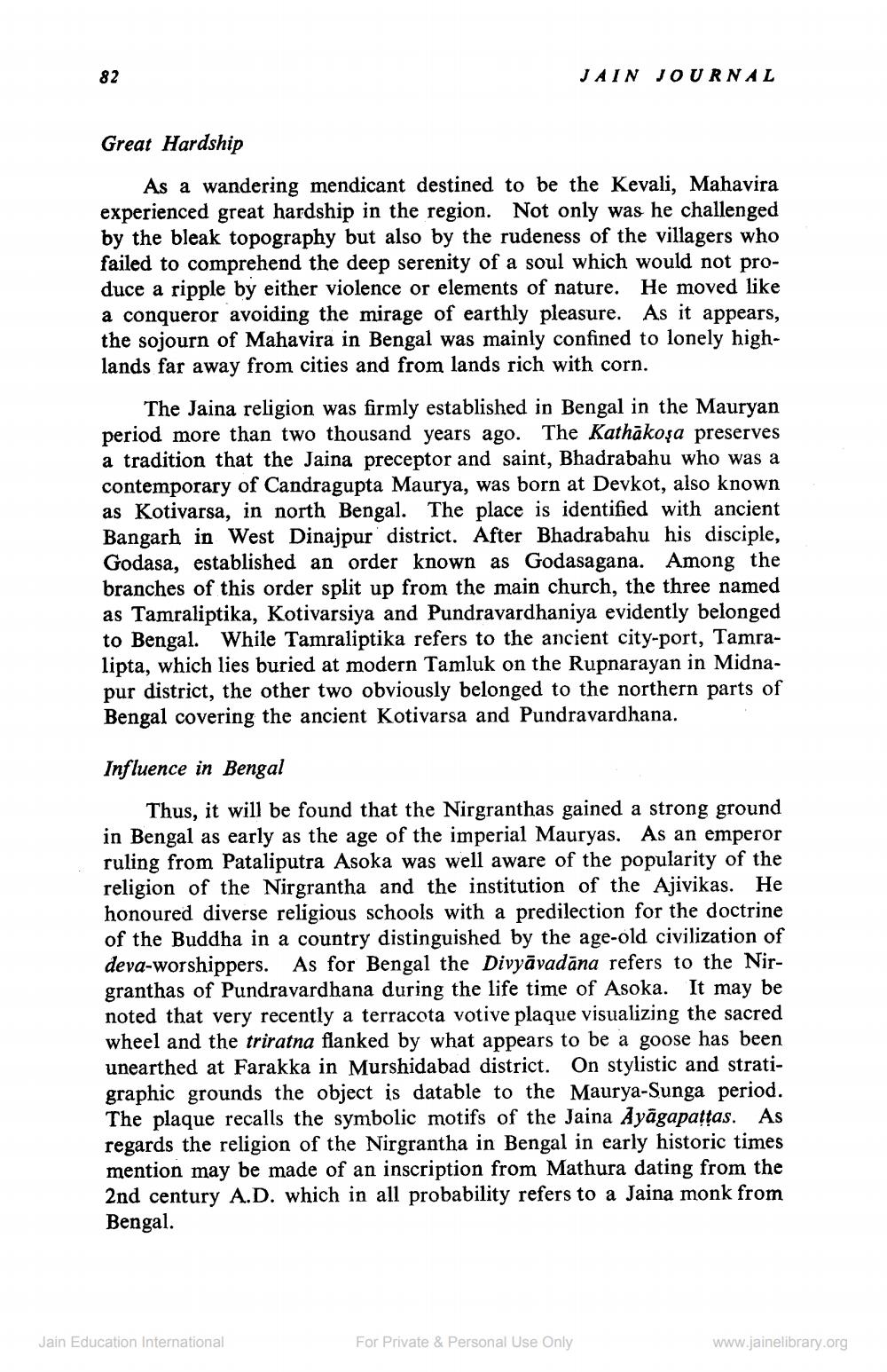________________
JAIN JOURNAL
Great Hardship
As a wandering mendicant destined to be the Kevali, Mahavira experienced great hardship in the region. Not only was he challenged by the bleak topography but also by the rudeness of the villagers who failed to comprehend the deep serenity of a soul which would not produce a ripple by either violence or elements of nature. He moved like a conqueror avoiding the mirage of earthly pleasure. As it appears, the sojourn of Mahavira in Bengal was mainly confined to lonely highlands far away from cities and from lands rich with corn.
The Jaina religion was firmly established in Bengal in the Mauryan period more than two thousand years ago. The Kathākoşa preserves a tradition that the Jaina preceptor and saint, Bhadrabahu who was a contemporary of Candragupta Maurya, was born at Devkot, also known as Kotivarsa, in north Bengal. The place is identified with ancient Bangarh in West Dinajpur district. After Bhadrabahu his disciple, Godasa, established an order known as Godasagana. Among the branches of this order split up from the main church, the three named as Tamraliptika, Kotivarsiya and Pundravardhaniya evidently belonged to Bengal. While Tamraliptika refers to the ancient city-port, Tamralipta, which lies buried at modern Tamluk on the Rupnarayan in Midnapur district, the other two obviously belonged to the northern parts of Bengal covering the ancient Kotivarsa and Pundravardhana.
Influence in Bengal
Thus, it will be found that the Nirgranthas gained a strong ground in Bengal as early as the age of the imperial Mauryas. As an emperor ruling from Pataliputra Asoka was well aware of the popularity of the religion of the Nirgrantha and the institution of the Ajivikas. He honoured diverse religious schools with a predilection for the doctrine of the Buddha in a country distinguished by the age-old civilization of deva-worshippers. As for Bengal the Divyāvadāna refers to the Nirgranthas of Pundravardhana during the life time of Asoka. It may be noted that very recently a terracota votive plaque visualizing the sacred wheel and the triratna flanked by what appears to be a goose has been unearthed at Farakka in Murshidabad district. On stylistic and stratigraphic grounds the object is datable to the Maurya-Sunga period. The plaque recalls the symbolic motifs of the Jaina Ayāgapattas. As regards the religion of the Nirgrantha in Bengal in early historic times mention may be made of an inscription from Mathura dating from the 2nd century A.D. which in all probability refers to a Jaina monk from Bengal.
Jain Education International
For Private & Personal Use Only
www.jainelibrary.org




